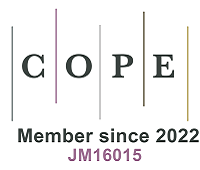Effect of elemental segregation and minor phase on mechanical properties of as-cast super-thick steels studied by in-situ synchrotron X-ray and neutron diffraction
Abstract
Internal defects, especially those caused by elemental segregation and minor phases in as-cast super-thick steel plates with large section sizes, can critically impact the subsequent manufacturing processes and the mechanical properties of final products, which may result in catastrophic failure during industrial applications. However, the effects of elemental segregation and the resultant phase structures on deformation behaviors and real-time microstructural evolution under tensile loading remain unexplored in as-cast super-thick steels. In this study, we employed in-situ synchrotron and neutron diffraction techniques during tensile tests to investigate the relationship between internal defects and deformation behaviors of segregated and non-segregated super-thick steels. Compared to the segregated sample, the non-segregated sample exhibited improved yield and tensile strengths, increasing from 407.5 MPa and 590.5 MPa to 515.2 MPa and 632.8 MPa, respectively, and with a significant increase in elongation from 8% to 23.4%. Strip-like elemental segregations were observed in the central core area due to final solidification, and the stress partitioning between ferrite matrix and retained austinite was revealed to be beneficial for uniform plastic deformation and necking before fracture. Both ductile and brittle fractographies were identified in segregated conditions. Our findings address a critical knowledge gap in understanding how elemental segregation and minor phase affect deformation behaviors, and offer valuable insights for optimizing processing parameters for as-cast super-thick steels.
Keywords
Elemental segregation, stress partitioning, in-situ synchrotron and neutron diffraction, super-thick steels
Cite This Article
Wen Z, Tan Z, Xu L, Shi C, Xiong L. Effect of elemental segregation and minor phase on mechanical properties of as-cast super-thick steels studied by in-situ synchrotron X-ray and neutron diffraction. Microstructures 2025;5:[Accept]. http://dx.doi.org/10.20517/microstructures.2025.16














